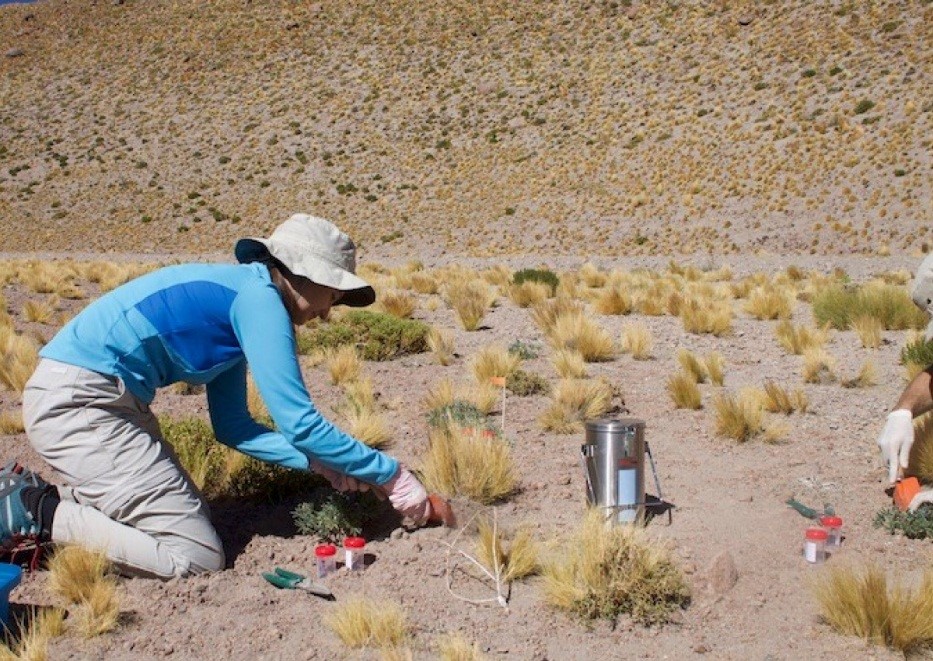An international research team has identified genes associated with plant survival in Chile's Atacama Desert, one of the harshest environments on Earth. The discovery will help scientists breed resilient crops that will thrive in drier climates.
The Atacama Desert in northern Chile, sandwiched between the Pacific Ocean and Andes Mountains, is the driest place on the planet, excluding the poles. Yet many plants grow there, including grasses, annuals, and perennial shrubs. Besides the limited availability of water, plants in the Atacama must cope with high altitude, low availability of nutrients in the soil, and extremely high radiation from sunlight. During a 10-year period, the Chilean research team collected and characterized the climate, soil, and plants at 22 sites in different vegetational areas and elevations along the Talabre-Lejía Transect.
The researchers brought the plant and soil samples—preserved in liquid nitrogen—1,000 miles back to the lab to sequence the genes expressed in the 32 dominant plant species in the Atacama and assess the plant-associated soil microbes based on DNA sequences. They found that some plant species developed growth-promoting bacteria near their roots, an adaptive strategy to optimize the intake of nitrogen which is critical for plant growth in the nitrogen-poor soils of the Atacama.
The team from New York University conducted an analysis using phylogenomics to identify the genes whose protein sequences were adapted in the Atacama species. The study found a "genetic goldmine" and identified 265 candidate genes whose protein sequence changes were selected by evolutionary forces across multiple Atacama species. These genes are involved in light response and photosynthesis, which may enable plants to adapt to the extreme high-light radiation in the Atacama. The researchers also uncovered genes involved in the regulation of stress response, salt, detoxification, and metal ions.
(Source: Crop Biotech Update, International Service for Acquisition of Agri-Biotech Applications. www.isaaa.org)




